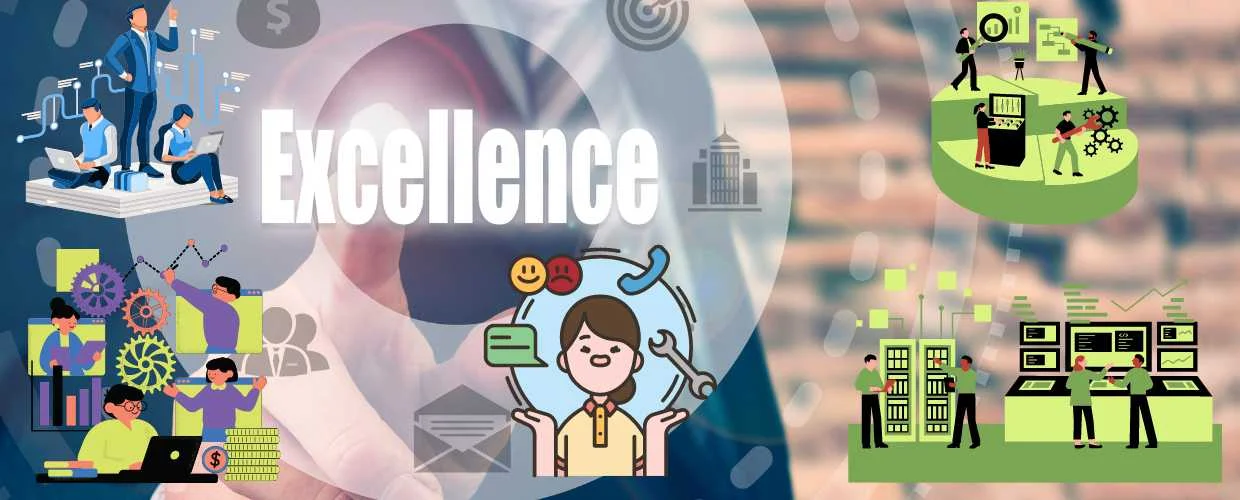In the dynamic landscape of modern business, where technology is the bedrock upon which operations and innovation are built, the importance of effective IT Service Management (ITSM) comes to the forefront. ITSM provides organizations with a strategic framework to deliver exceptional IT services, maintain seamless operations, and align technology with business goals. In this comprehensive exploration, we delve deep into the world of ITSM, uncovering its core principles, multifaceted components, significant advantages, intricate challenges, and its paramount role in ensuring efficient IT operations and driving organizational success.
What is IT Service Management (ITSM)?
At its heart, IT Service Management (ITSM) encapsulates a comprehensive set of best practices, methodologies, processes, and tools that organizations utilize to design, deliver, manage, and continuously enhance their IT services. ITSM emphasizes a holistic approach that ensures IT services are aligned with the organization’s business goals, enhance customer satisfaction, and maintain a robust IT environment. By adopting ITSM, organizations foster collaboration, streamline processes, and cultivate a customer-centric approach that positions them on the path toward operational excellence.
Key Components of IT Service Management
The realm of ITSM encompasses several critical components, each playing a vital role in ensuring the seamless delivery of efficient and reliable IT services.
Service Strategy
Service Strategy forms the bedrock of effective ITSM by aligning IT services with the overarching business objectives of an organization. This component involves the meticulous process of defining service offerings, understanding customer needs, and devising a comprehensive strategy that maximizes IT services’ value while minimizing potential risks.
Service Design
Service Design delves into the meticulous planning and design of IT services, ensuring they meet the business’s specific requirements while adhering to stringent quality standards. During this phase, organizations create detailed blueprints for service processes, select appropriate technologies, and develop documentation contributing to the seamless delivery of services.
Service Transition
Service Transition is the phase where new or modified services are introduced into the operational environment with minimal disruptions. This phase involves comprehensive testing, training, change management, and meticulous planning to ensure a smooth transition, ultimately minimizing the potential impact on ongoing operations.
Service Operation
Service Operation embodies the day-to-day management and delivery of IT services. This component includes critical functions such as incident management, problem management, access management, and continuous monitoring. By ensuring that services are available, reliable, and responsive to user needs, Service Operation maintains the core stability of an organization’s IT environment.
Continual Service Improvement (CSI)
Continual Service Improvement represents a continuous commitment to enhancing IT services based on feedback and performance metrics. This iterative process involves analyzing data, identifying areas for improvement, and implementing changes that optimize service delivery over time.
Benefits of IT Service Management
The adoption of ITSM brings forth an array of advantages that span operational efficiency, customer satisfaction, and strategic alignment.
Enhanced Service Quality
At the heart of ITSM lies a dedicated focus on delivering high-quality IT services. By adhering to established processes and best practices, organizations ensure that their services are consistent, reliable, and aligned with the expectations of their customers.
Improved Incident Management
Effective incident management is a hallmark of successful ITSM implementation. ITSM empowers organizations to respond swiftly and effectively to incidents, minimizing their impact on operations. By structuring incident management processes, organizations ensure that issues are resolved in a timely manner, providing users with a seamless experience.
Efficient Change Management
In a landscape marked by rapid technological advancements, change is inevitable. ITSM provides a structured approach to change management, ensuring that modifications to IT services are meticulously planned, rigorously tested, and communicated transparently to all stakeholders. By mitigating risks and disruptions, organizations maintain stability during times of change.
Customer-Centric Approach
A central tenet of ITSM is its emphasis on a customer-centric approach. By engaging with end-users, understanding their requirements, and incorporating feedback, organizations tailor their IT services to enhance customer satisfaction. This approach solidifies the alignment of IT operations with the needs of the organization’s user base.
Alignment with Business Goals
Effective ITSM ensures a strong alignment between IT services and the broader business goals of an organization. This synergy fosters collaboration, enhances communication between IT and other departments, and positions technology as an enabler for achieving strategic objectives.
Practical Applications of IT Service Management
The versatility of ITSM is reflected across diverse industries, shaping how organizations manage their IT operations and support their overarching business objectives.
Financial Services
In the realm of financial services, where precision, security, and reliability are paramount, ITSM ensures the availability and integrity of critical systems such as online banking platforms and trading systems. Effective ITSM safeguards these systems against disruptions, ensuring the seamless execution of financial transactions and bolstering customer trust.
Healthcare
The healthcare industry relies heavily on technology to manage patient information, medical records, and telehealth services. ITSM plays a pivotal role in ensuring these systems’ availability, confidentiality, and integrity. ITSM contributes to timely patient care and efficient healthcare operations by providing a robust framework for managing IT services.
E-Commerce
E-commerce platforms thrive on the availability and functionality of IT services. ITSM ensures that online marketplaces, payment gateways, and customer support systems remain responsive, secure, and capable of handling peak traffic during sales events. This reliability underpins the success of e-commerce operations.
Manufacturing
The manufacturing sector leverages ITSM to manage production systems, supply chain operations, and quality control processes. By ensuring the seamless availability of systems that drive production efficiency and maintain product quality, ITSM contributes to streamlined manufacturing operations and timely product delivery.
Challenges of IT Service Management Implementation
While the benefits of ITSM are compelling, the successful implementation of this framework comes with its set of challenges that require strategic planning, collaboration, and adaptive approaches.
Cultural Change
Implementing ITSM often necessitates a cultural shift within organizations. Teams must transition to standardized processes, embrace collaboration, and adopt a customer-centric mindset to ensure consistent service delivery.
Complex Integration
Integrating ITSM processes and tools with existing IT infrastructure can be complex. Seamless integration while minimizing disruptions demands meticulous planning, technical expertise, and department coordination.
Data Security and Compliance
Maintaining data security and compliance with regulations is paramount in ITSM implementation. Organizations must ensure that IT services and processes adhere to data protection standards, safeguarding sensitive information, and adhering to legal requirements.
Resistance to Change
The introduction of ITSM practices often faces resistance from employees accustomed to established workflows. Successful implementation requires well-structured change management strategies that address concerns, provide training, and encourage the adoption of new practices.
Future Trends in IT Service Management
As technology continues to evolve, ITSM adapts to incorporate emerging trends that redefine the landscape of IT operations.
Automation and AI
Automation and Artificial Intelligence (AI) are poised to play pivotal roles in the future of ITSM. These technologies enable the automation of routine tasks, proactive detection of issues, and intelligent decision-making. This integration increases efficiency, reduces manual intervention, and enhances service quality.
DevOps Integration
The integration of ITSM with DevOps practices is a trend that cultivates collaboration between development and operations teams. This integration accelerates software delivery, enhances communication, and streamlines the end-to-end process of IT service delivery, fostering a culture of agility and efficiency.
Self-Service Portals
The evolution of ITSM incorporates the concept of self-service portals. These portals empower users to resolve issues, request services, and access information independently. By offering self-service options, organizations reduce the burden on support teams and enhance user satisfaction and engagement.
Data-Driven Insights
With the proliferation of data analytics, ITSM transforms into a strategic tool that provides actionable insights into service performance, user behavior, and potential areas for improvement. By harnessing the power of data, organizations make informed decisions, proactively address challenges, and enhance the overall efficiency of their IT operations.
Conclusion
In the landscape of modern business, where technology’s influence is pervasive, IT Service Management (ITSM) stands as an indispensable framework that ensures seamless IT service delivery, fosters collaboration, and propels organizational success. The application of ITSM principles optimizes IT operations, elevates customer satisfaction, and aligns technological endeavors with the overarching business strategy. While challenges may arise during implementation, the benefits of ITSM—enhanced service quality, efficient incident management, and streamlined change control—are a testament to its value. As technology continues to evolve, ITSM adapts, embracing automation, AI, and data-driven insights to create even more efficient and responsive IT operations.
With ITSM as a steadfast ally, organizations traverse the complex terrain of technology with confidence, agility, and a dedication to excellence in IT service delivery.










